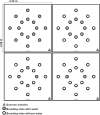Influence of breeding site availability on the oviposition behaviour of Aedes aegypti
- PMID: 26154742
- PMCID: PMC4569832
- DOI: 10.1590/0074-02760140490
Influence of breeding site availability on the oviposition behaviour of Aedes aegypti
Abstract
Despite the importance of the mosquito Aedes aegypti in the transmission of arboviruses, such as yellow fever, Chikungunya fever and dengue fever, some aspects of their behaviour remain unknown. In the present study, the oviposition behaviour of Ae. aegypti females that were exposed to different densities of breeding sites (2, 4, 8 and 16) was evaluated in laboratory and semi-field conditions. The number of breeding sites that were used was proportional to the number available, but tended towards stabilisation. Females used four-six breeding sites on average, with a maximum of 11. A high percentage of eggs was observed in the water, along with the presence of a breeding site termed "favourite", which received at least 40% of the eggs. The results are discussed in ecological, evolutionary and epidemiological approaches.
Figures








References
-
- Allan AS, Kline DL. Evaluation of organic infusions and synthetic compounds mediating oviposition in Aedes albopictus and Aedes aegypti (Diptera: Culicidae) J Chem Ecol. 1995;21:1847–1860. - PubMed
-
- Apostol BL, Black WC, III, Reiter P, Miller BR. Use of randomly amplified polymorphic DNA amplified by polymerase chain reaction markers to estimate the number of Aedes aegypti families at oviposition sites in San Juan, Puerto Rico. Am J Trop Med Hyg. 1994;51:89–97. - PubMed
-
- Becker N. Life strategies of mosquitoes as an adaptation to their habitats. Bull Soc Vector Ecol. 1989;14:6–25.
-
- Begon M, Townsend CR, Harper JL. Ecologia de indivíduos a ecossistemas. 2nd. Artmed; Porto Alegre: 2007. 752
-
- Bentley MD, Day JF. Chemical ecology and behavioral aspects of mosquito oviposition. Ann Rev Entomol. 1989;34:401–421. - PubMed
Publication types
MeSH terms
LinkOut - more resources
Full Text Sources
Other Literature Sources

